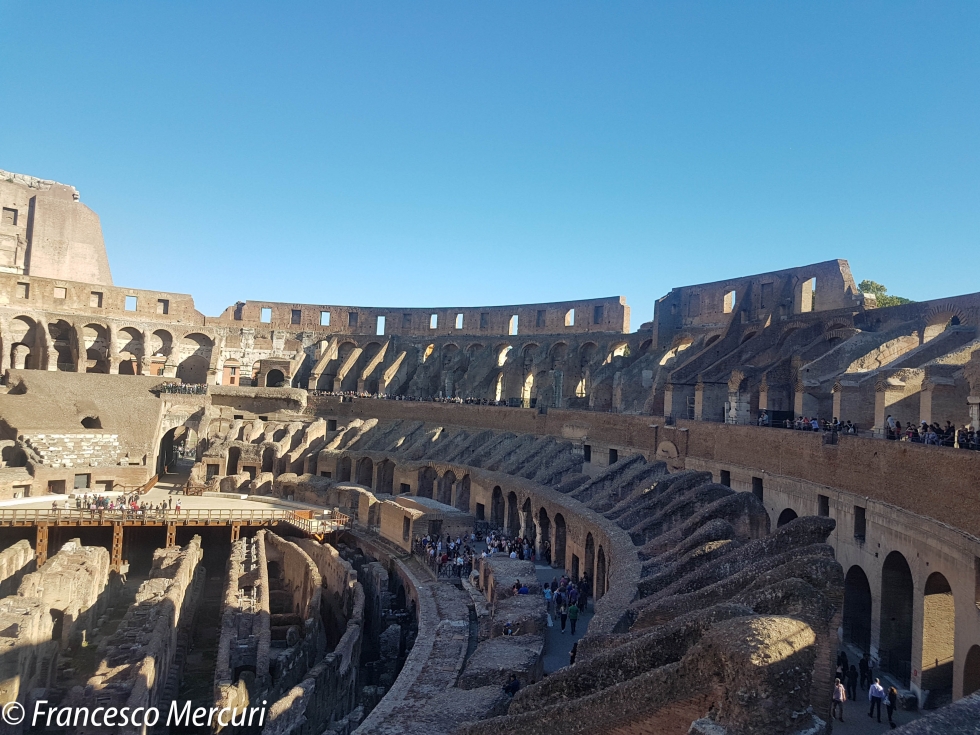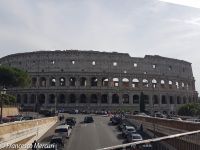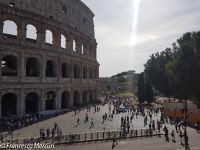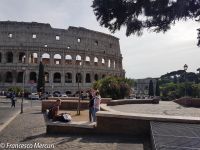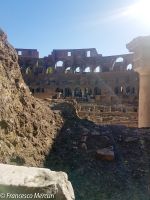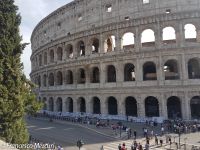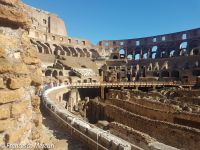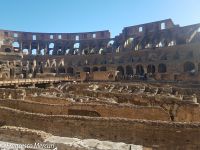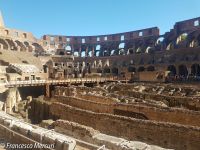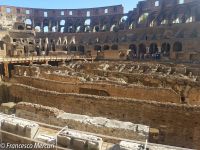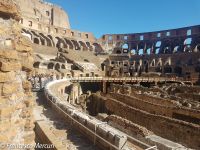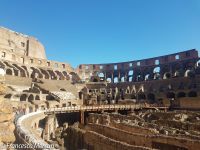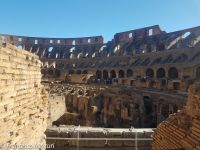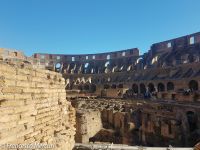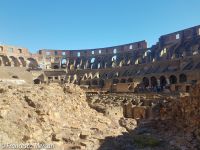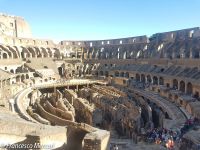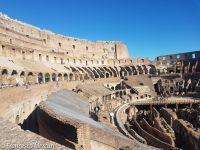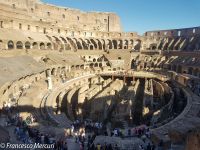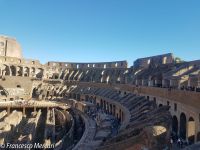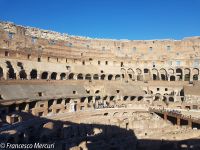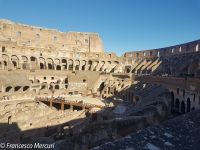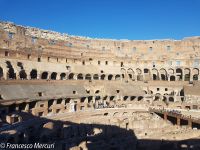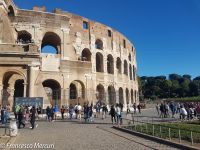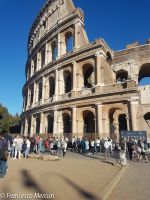Through the years a lot has been written about the Flavian Amphitheatre, probably because it is the most famous monument in the world. But the fact that has been less analysed, or at least not given the right importance, it’s the origin of its name: Colosseum.
First of all it is interesting that in the Ancient Rome citizens never referred to it with this name, which has led many researchers and historians to try to understand how the name Colosseum started to spread. Which were the reasons that caused the changing of the monument’s name, from the old and classical form to the newer and more popular definition? The word “Colosseum” started to spread in the VIII century and became well known during the Early Middle Ages. In fact the term appeared for the first time in a text by Bede the Venerable, a Benedictine monk who lived in the old Sunderland county in England and who - incredibly - had never been in Rome.The most popular theory wants this name to come from the ‘colossal’ dimensions of the Flavian Amphitheatre: in the ancient time a 527-meter ellipse of bricks, Roman concrete and travertine stones, with its original 52 meters of height (today 48), was surely surprising and impressive. However, this is not the only theory. It is believed that an enormous bronze statue representing Emperor Nero was situated near the Colosseum. This statue was 36 meters high and so it was the tallest bronze statue ever built. We have mention of the existence of this Nero’s monument until 354 A.D. and it was probably destroyed in 410 A.D. during the Sack of Rome by the Visigoths of King Alaric. So maybe the Romans started to change the name of the Flavian Amphitheatre influenced by the presence of this significant statue, but we can’t know it for sure. A more suggestive – but not unlikely – thesis affirms that the Colosseum takes its name from the Oppian Hill in front of it, on the top of which, during the Classical era, lied a Temple dedicated to the goddess Isis. The cult of this Egyptian deity started to spread in Rome at the end of the 1st century: she was the protectress of fecundity, maternity and magic. Because of her, the Oppian Hill in the Ancient Rome was called “Collis Isei” which it’s extremely close to the word Colosseum and some historians believe that this can be the real origin of its name.The last theory on this subject is related to magic, and in my opinion is also the most interesting. A few years after the fall of the Western Roman Empire, the monument was abandoned and left to rot. After being sacked of all its travertine stones during the Early Medieval Period, it became a reunion place for rejected and homeless people. Someone even assert that the Amphitheatre hosted various demonic sets. The ministers of these religious sets used to show the initiates an effigy depicting the Devil and ask them: “Colis Eum?” (Colosseum for assonance) which translated means “Do you worship Him?”. A very creative theory that underlines the uniqueness of the monument and all its different roles through the years.An interesting fact: in 1325 Armannino Giudice described in his work “Fiorita” - a collection of historical and mythical tales - the Colosseum as the main temple of the Devil. This view of the famous monument was certainly sustained by the Roman Church, especially during the High Middle Ages, or better from a part of it that – seeing the Flavian Amphitheatre as the place where lots of Christians were martyrized (an unfounded fact!) – wanted its destruction. As a matter of fact, the Colosseum was linked to sets’ meetings and to magic for the following centuries. Benvenuto Cellini – a Renaissance artist – once, late in the night, witnessed one of these rituals with a friend and for the fear (as he described with a very explicit and colorful language) he literally broke wind (“fece una istrombazzata di coregge con tanta abundanzia di merda, la quale potette molto più che la zaffetica”).In the first half of the XVI century the monument was almost demolished to preserve the memory of what it had represented in the Ancient Rome. But luckily in 1750 A.D. Pope Benedict XIV chose to celebrate the first “Via Crucis” inside of the Colosseum.From that day on, any rumor about the Flavian Amphitheatre as a demoniacal place ended and the monument was no more destroyed.In the end, it is really fascinating how one of the most creative theories about the Colosseum name has characterized the monument’s story throughout the centuries after the fall of the Western Roman Empire.
Giuseppe Rosselli




